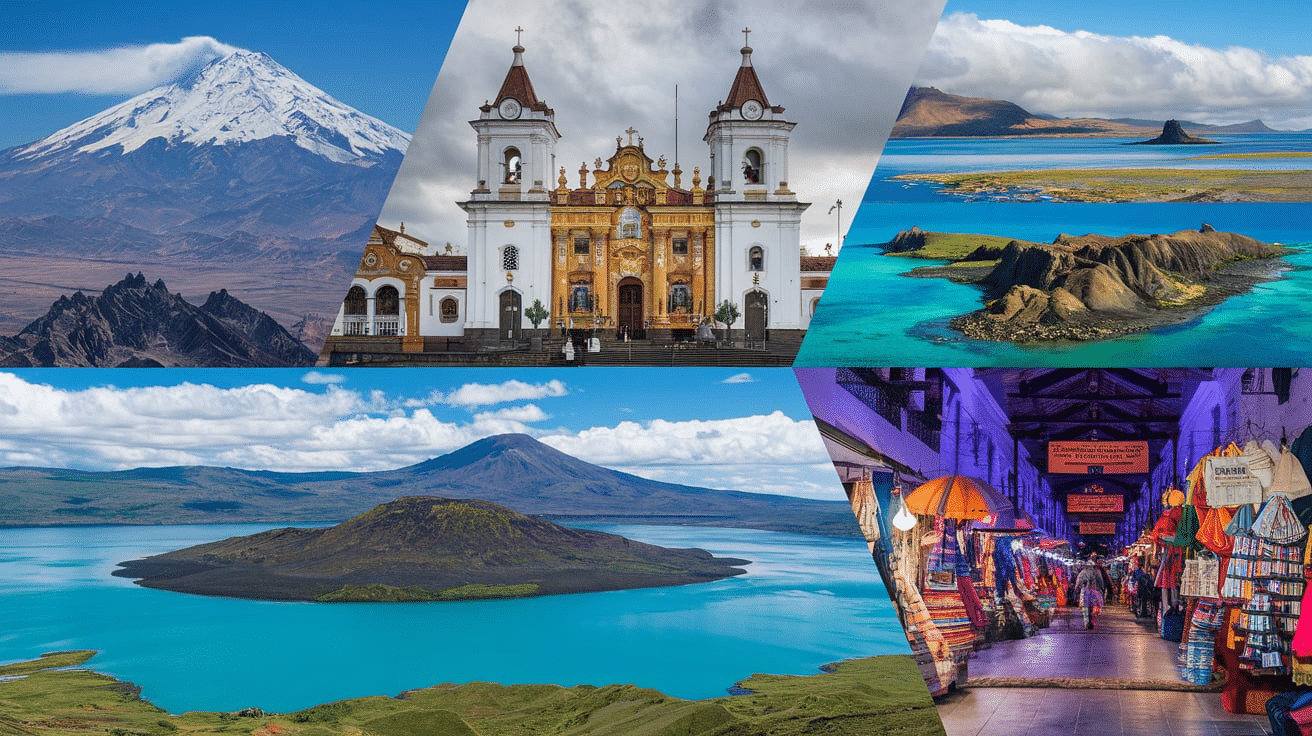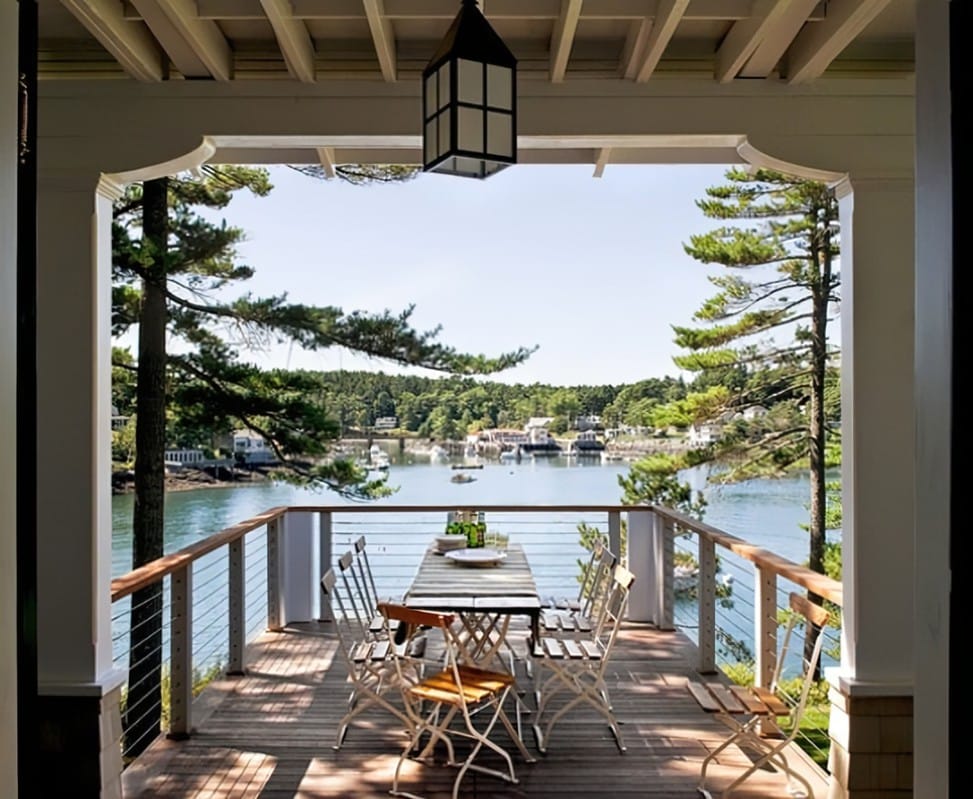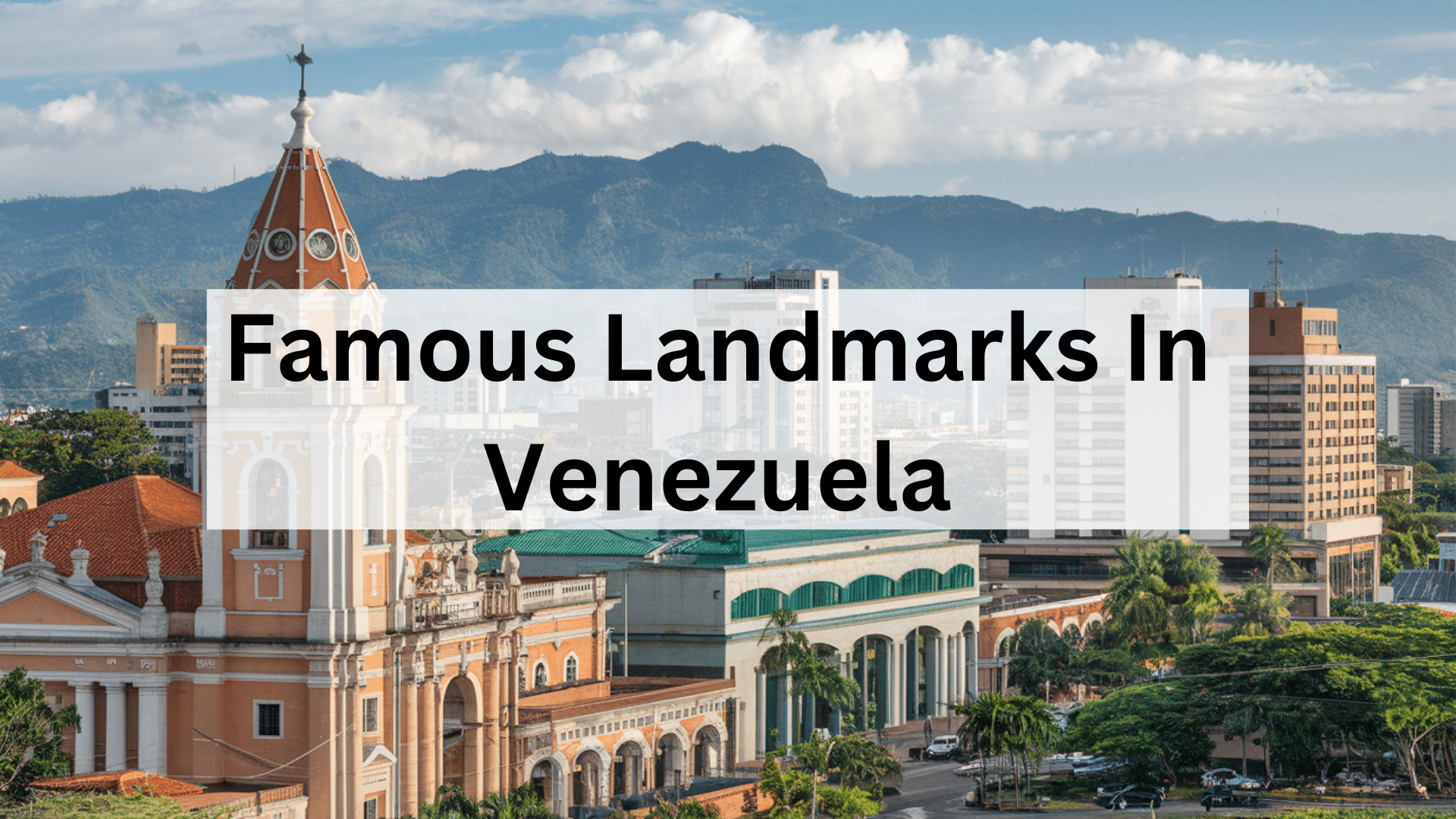Top 23 Ecuador Landmarks You Can’t Miss
Ecuador is a beautiful country full of amazing places to visit, but it can be hard to know where to start.
From the unique animals of the Galapagos Islands to giant volcanoes and old ruins, there’s so much to see. If you love history, nature, or wildlife, Ecuador has something for you.
In this guide, we’ll show you some of the best landmarks, like Cotopaxi, Laguna Quilotoa, and historic churches.
Curious about what makes Ecuador special? Keep reading to learn about the must-see spots that will make your trip unforgettable.
Ecuador’s Landmarks: A Blend of Nature and History
Ecuador’s landmarks offer a mix of volcanoes, ancient ruins, and natural wonders. From the Galapagos Islands and cloud forests to historical sites like Incan walls and colonial churches, there’s something for everyone.
The country sits on the equator, with landscapes ranging from sea level to high mountains. This creates unique places like hot springs heated by volcanoes and lakes inside old craters.
Ecuador’s cities also show its rich history. Spanish colonial buildings stand next to pre-Colombian sites. Quito and Cuenca are known for their well-preserved old-world charm and are UNESCO World Heritage sites.
In Ecuador, you’ll find historical landmarks like the Ingapirca Ruins, La Compania de Jesus church, and the San Francisco Church.
These sites blend Inca and Catholic influences, letting you step back in time and see how different cultures shaped Ecuador.
List of Ecuador Landmarks
1. Galapagos Islands
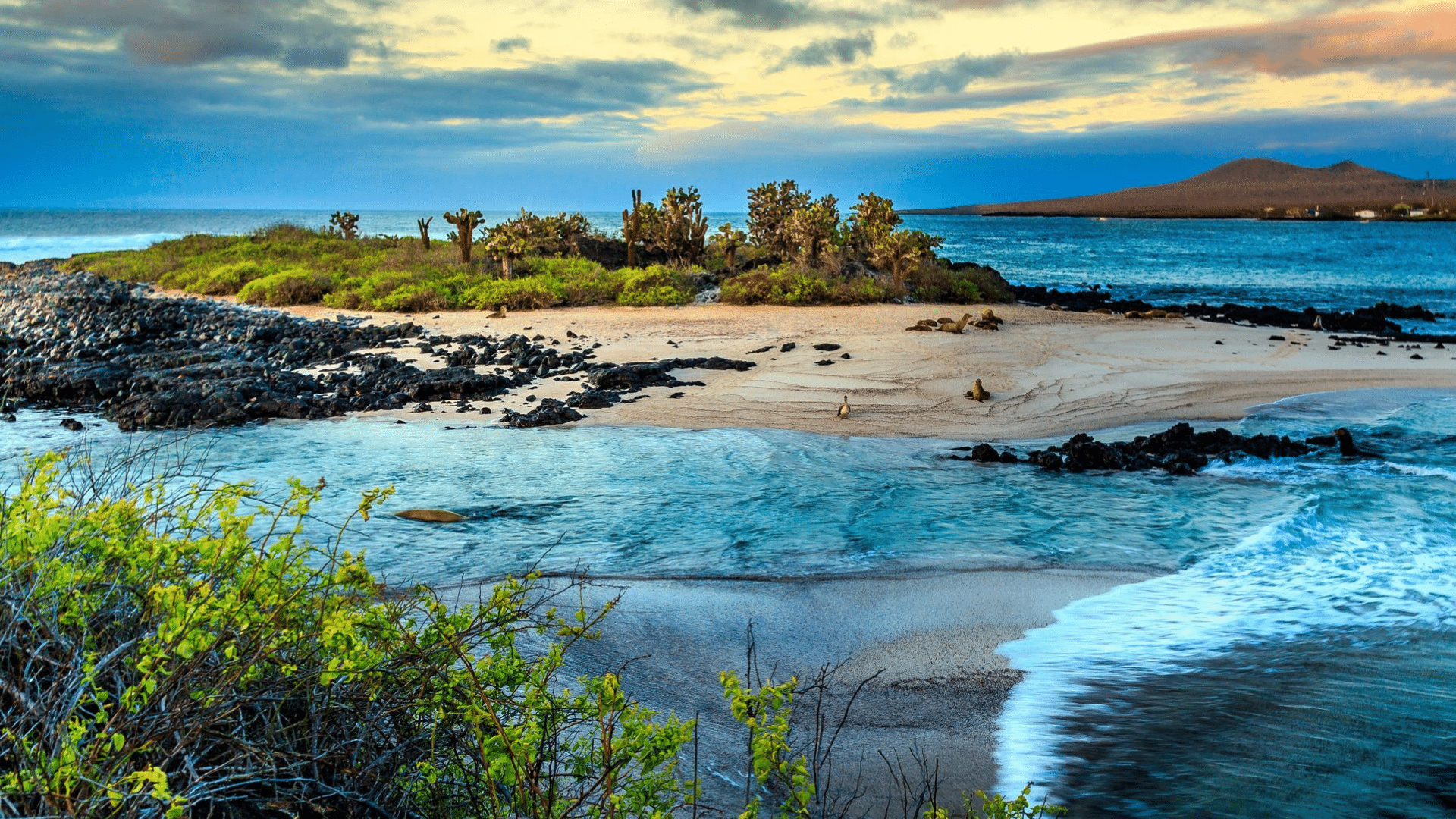
The Galápagos Islands, located 960 km (600 miles) off the coast of Ecuador, are famous for their unique wildlife, which inspired Charles Darwin’s theory of evolution.
Established as a national park in the 1960s, these islands’ waters are also a UNESCO Biosphere Reserve, making them a vital area for biodiversity conservation.
Why Visit: See rare animals like Galapagos penguins, sea lions, and giant tortoises in their natural home.
Interesting Fact: These islands have the only penguins found north of the equator.
2. Ingapirca Ruins
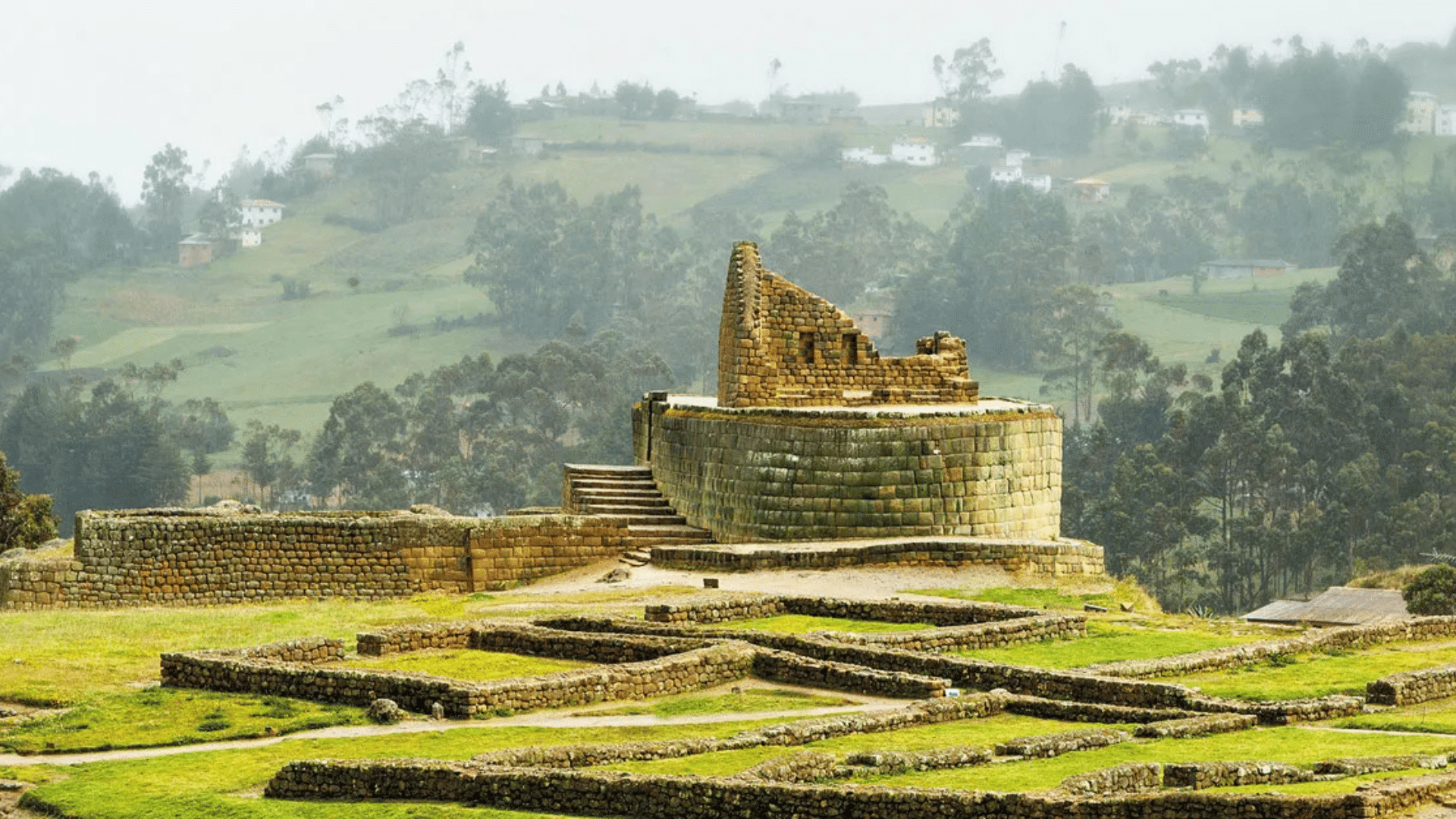
The largest Inca ruins in Ecuador, known as Ingapirca (meaning “Inca Wall” in the Kichwa language), showcase two different cultural styles.
Originally built by the Canari people and later expanded by the Incas, it features the only Temple of the Sun in the Inca empire.
Why Visit: See the meeting of two ancient cultures through their different building methods.
Interesting Fact: The temple was built on a ceremonial rock and used to track important festival dates.
3. Mitad del Mundo
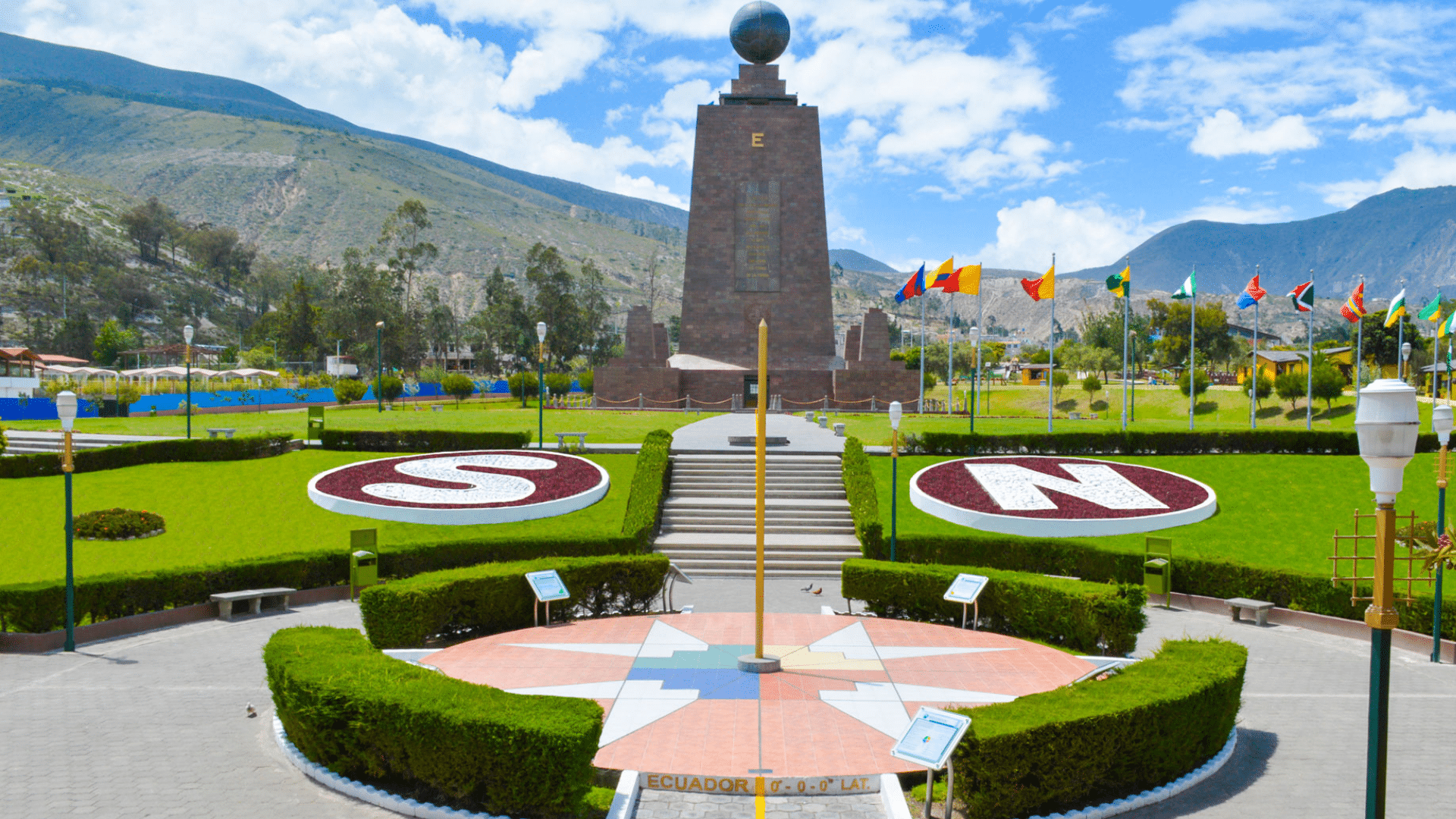
A monument marking where the equator passes through Ecuador was built where French explorers calculated the equator in 1736.
Although the actual equator is 240 meters north of the monument, it features a painted line representing the calculated equator.
Why Visit: Stand with one foot in each half of the world.
Interesting Fact: The nearby Itiñan Solar Museum shows interesting equator-related science experiments.
4. Catedral Nueva
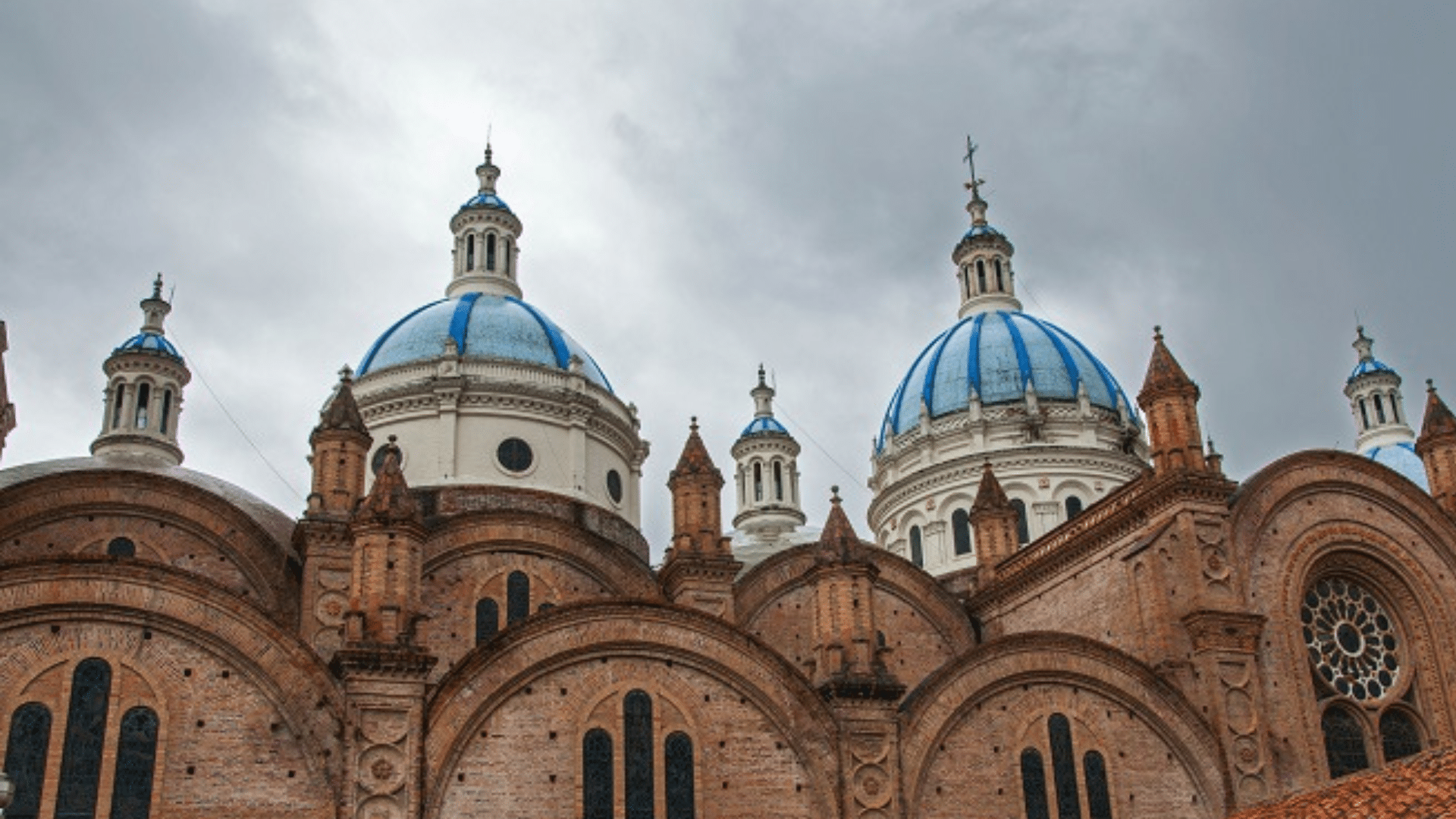
The stunning unfinished cathedral in Cuenca, built in the 19th century, showcases multiple architectural styles. It features blue domes with tiles from Czechoslovakia and contains a Baroque altar inspired by one in St. Peter’s in Rome.
Why Visit: See the mix of Roman, Gothic, Baroque, and Renaissance styles in one building.
Interesting Fact: Local legend says the world will end if the cathedral is ever finished.
5. Otavalo Market

A colorful traditional market run by indigenous people, located in Imbabura Province, known as the “Land of Lakes,” takes place every Saturday. The markets take over one-third of the town and feature textiles, crafts, paja toquilla hats, and ponchos.
Why Visit: Find authentic handmade items and support local artisans.
Interesting Fact: This market has helped the local economy grow while keeping traditions alive.
6. Virgen de El Panecillo
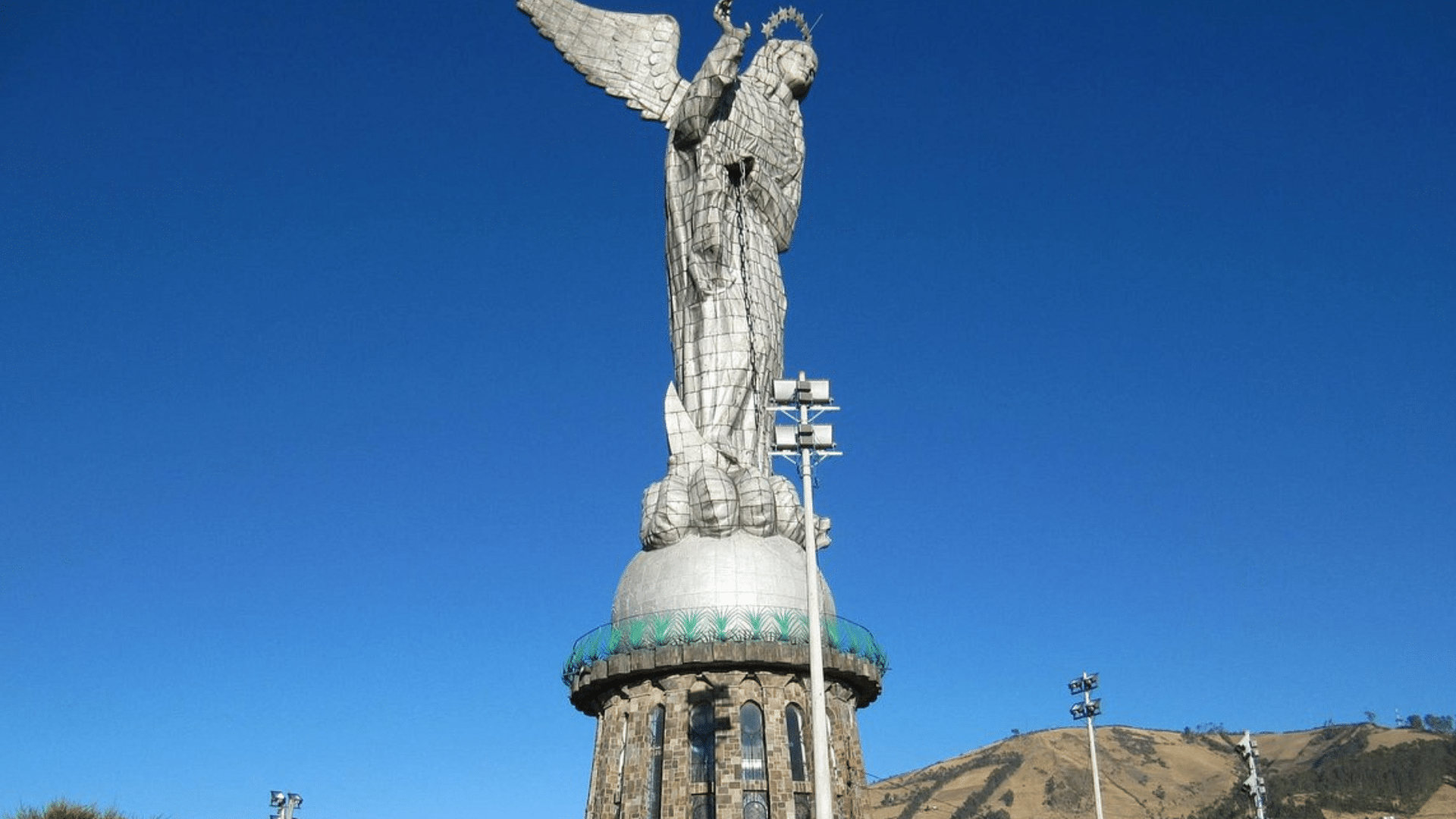
The world’s tallest aluminum statue of the Virgin Mary is located on a hill in the center of Quito. It was erected in the 1970s after nearly 20 years of debate and is 98 meters tall. It was made from 7,400 pieces of aluminum.
Why Visit: Get amazing views of Quito and see this impressive modern monument.
Interesting Fact: It’s a giant replica of a small 18th-century wooden statue.
7. Nariz del Diablo

Part of what’s called “the most difficult railway in the world,” this railway features a near-vertical 800-meter rock wall. The track zigzags up the steep 1-in-18 gradient wall, with construction beginning in 1899.
Why Visit: Experience an amazing feat of engineering and beautiful mountain views.
Interesting Fact: Only a 12 km stretch is currently open due to El Niño damage.
8. Leon Dormido (Kicker Rock)
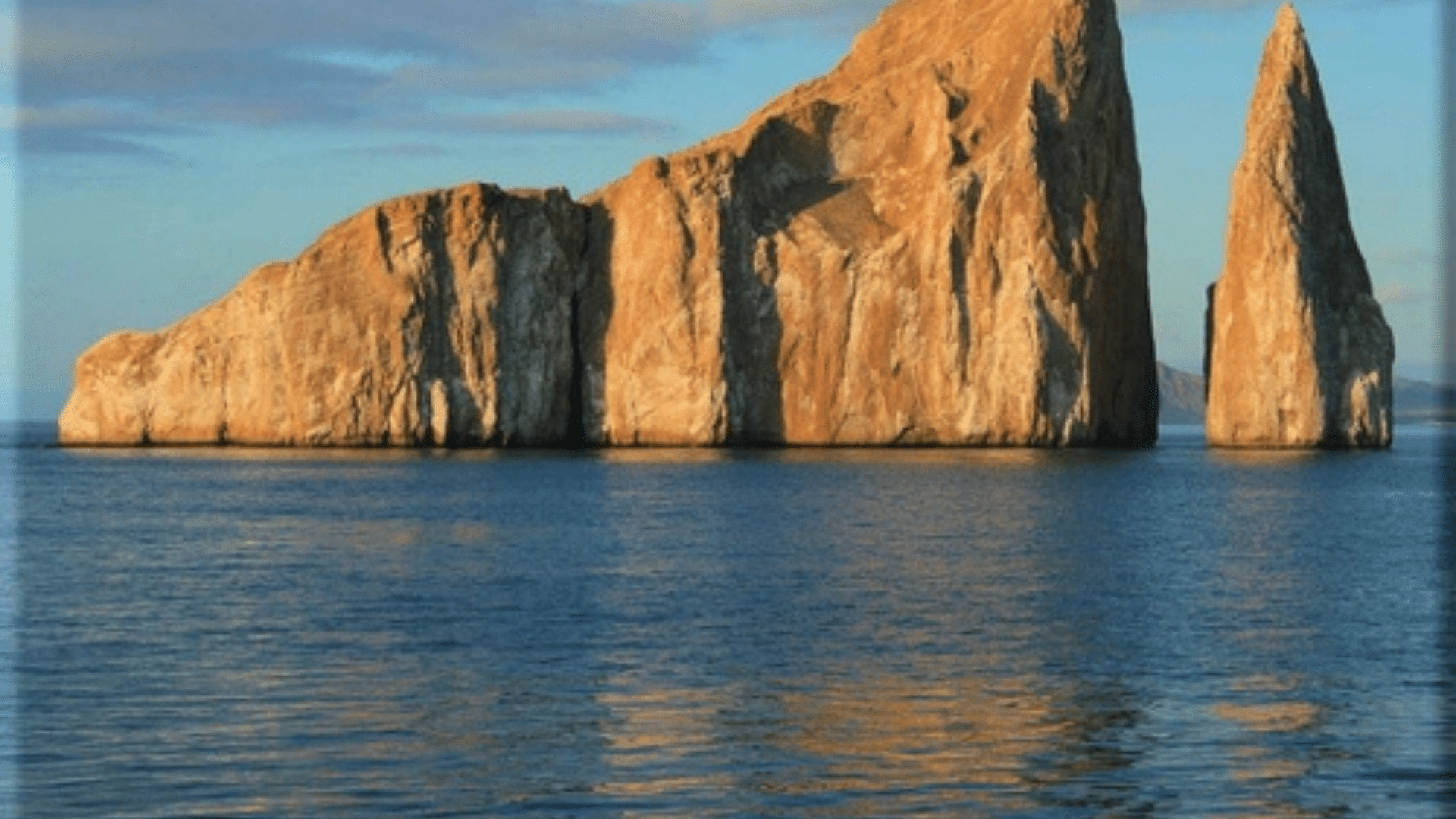
A striking volcanic formation off San Cristóbal Island, known as the “Sleeping Lion” in Spanish for its shape, rises dramatically from the ocean in two massive slabs. The gap between the rocks is just wide enough for small boats to pass through.
Why Visit: Excellent spot for snorkeling and diving with sharks, turtles, and sea lions.
Interesting Fact: What’s above water is impressive, but the underwater world is even better.
9. Cueva de Los Tayos
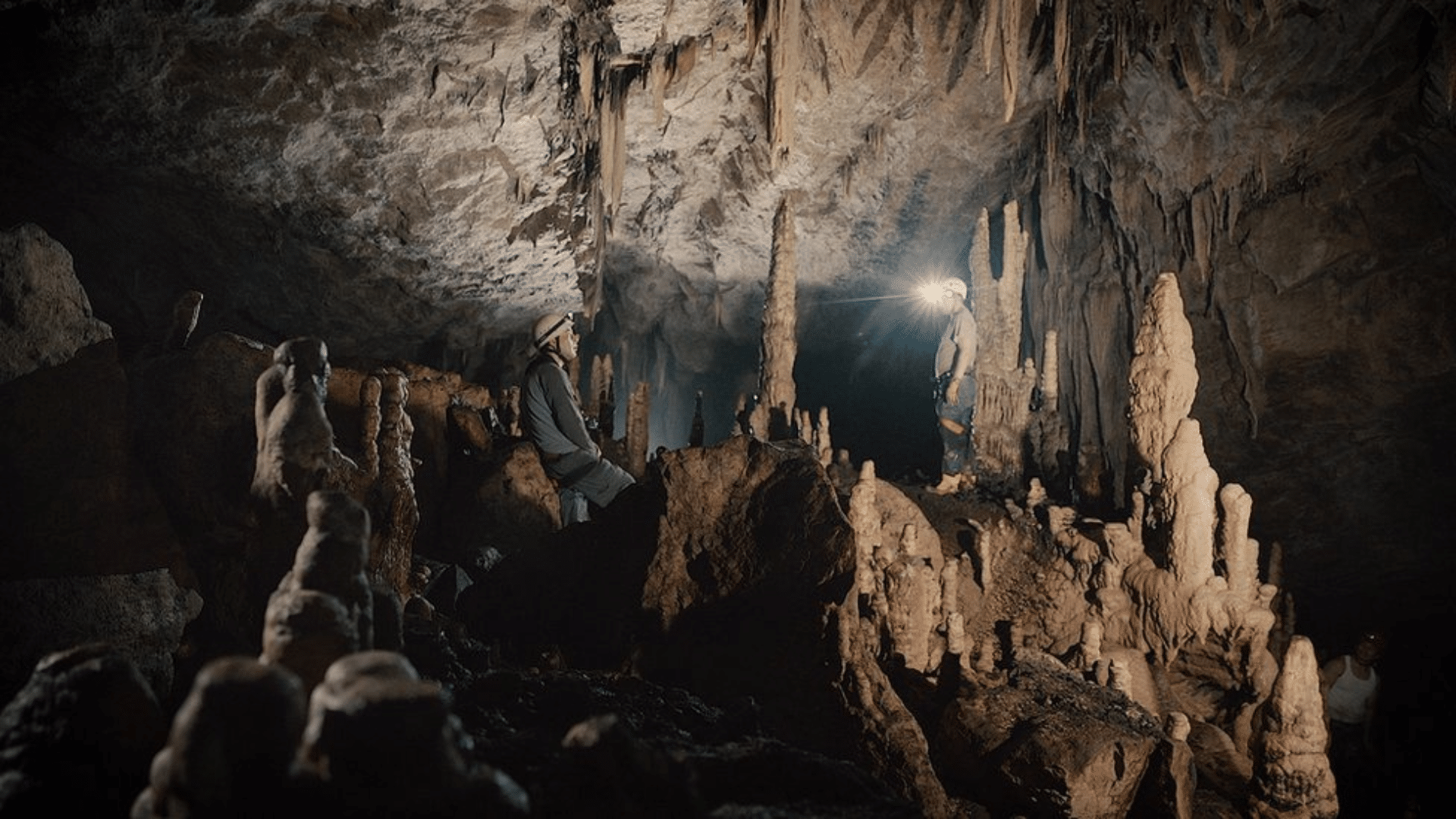
A mysterious cave system with unusual wildlife and plants, it has been used only by the indigenous Shuar people for hundreds of years. Located in the dense jungle in the eastern Andes foothills, the cave is 213 feet deep, with many tunnels and chambers.
Why Visit: Explore a place with rare species and rich local legends.
Interesting Fact: The largest chamber measures 295 feet by 787 feet.
10. Puyango Petrified Forest
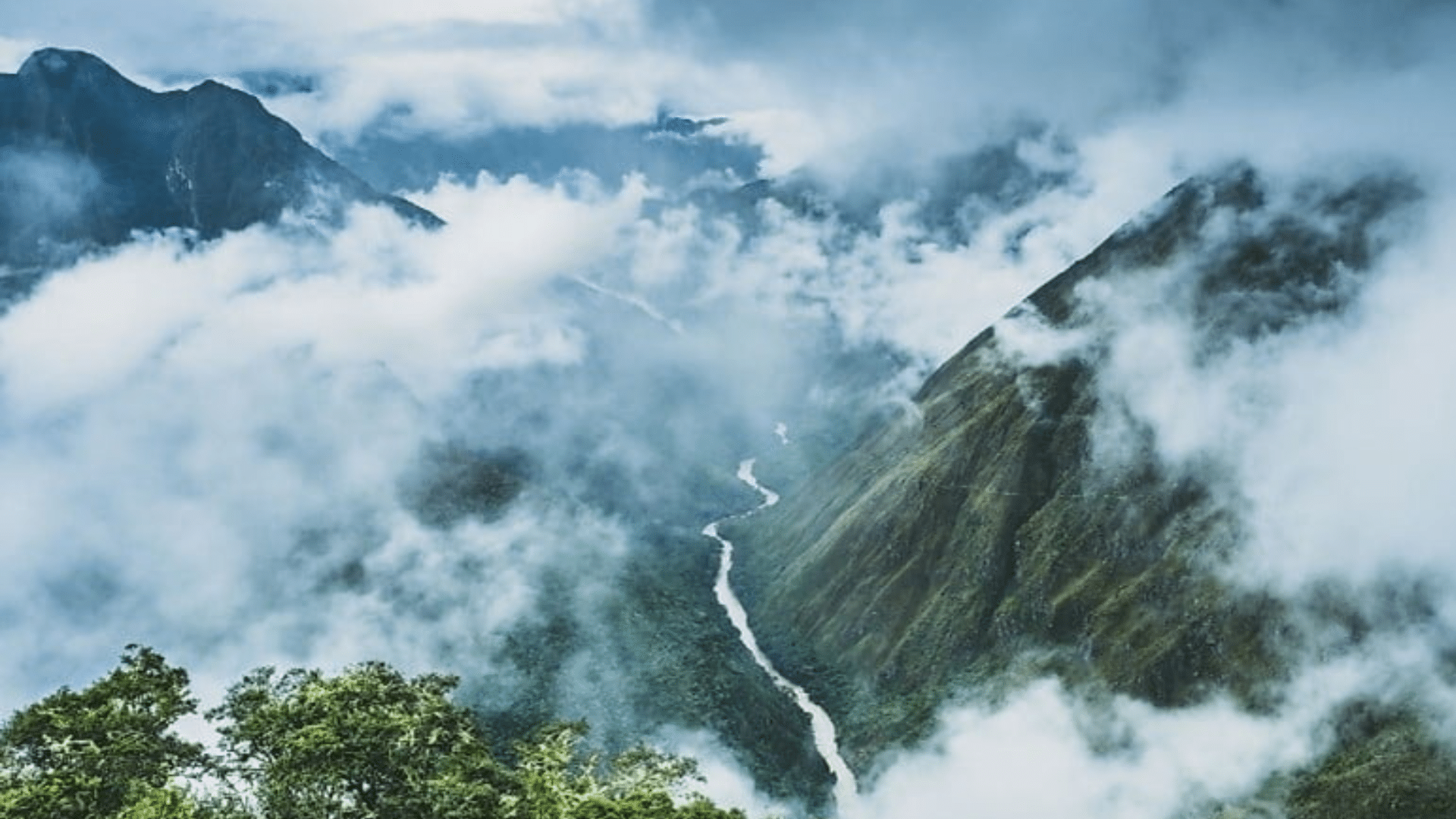
South America’s largest collection of fossilized trees is located 100 kilometers from Machala. It contains tree fossils from 120 million years ago and features ancient araucaria trees, some reaching up to 1.6 meters in diameter.
Why Visit: See natural history preserved in stone.
Interesting Fact: A nearby museum has marine fossils from when the area was underwater.
11. Cloud Forest
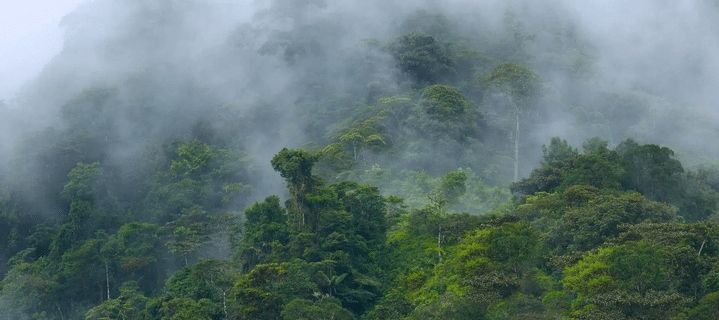
A misty, moss-covered forest high in the mountains, located near Quito at a high altitude, is home to many orchid species. It also serves as a habitat for rare birds like the Jocotoco Antpitta.
Why Visit: Walk through magical forest scenes with trees covered in moss and vines.
Interesting Fact: The views of mist rolling over mountains with jungle breaking through clouds are amazing.
12. Cotopaxi
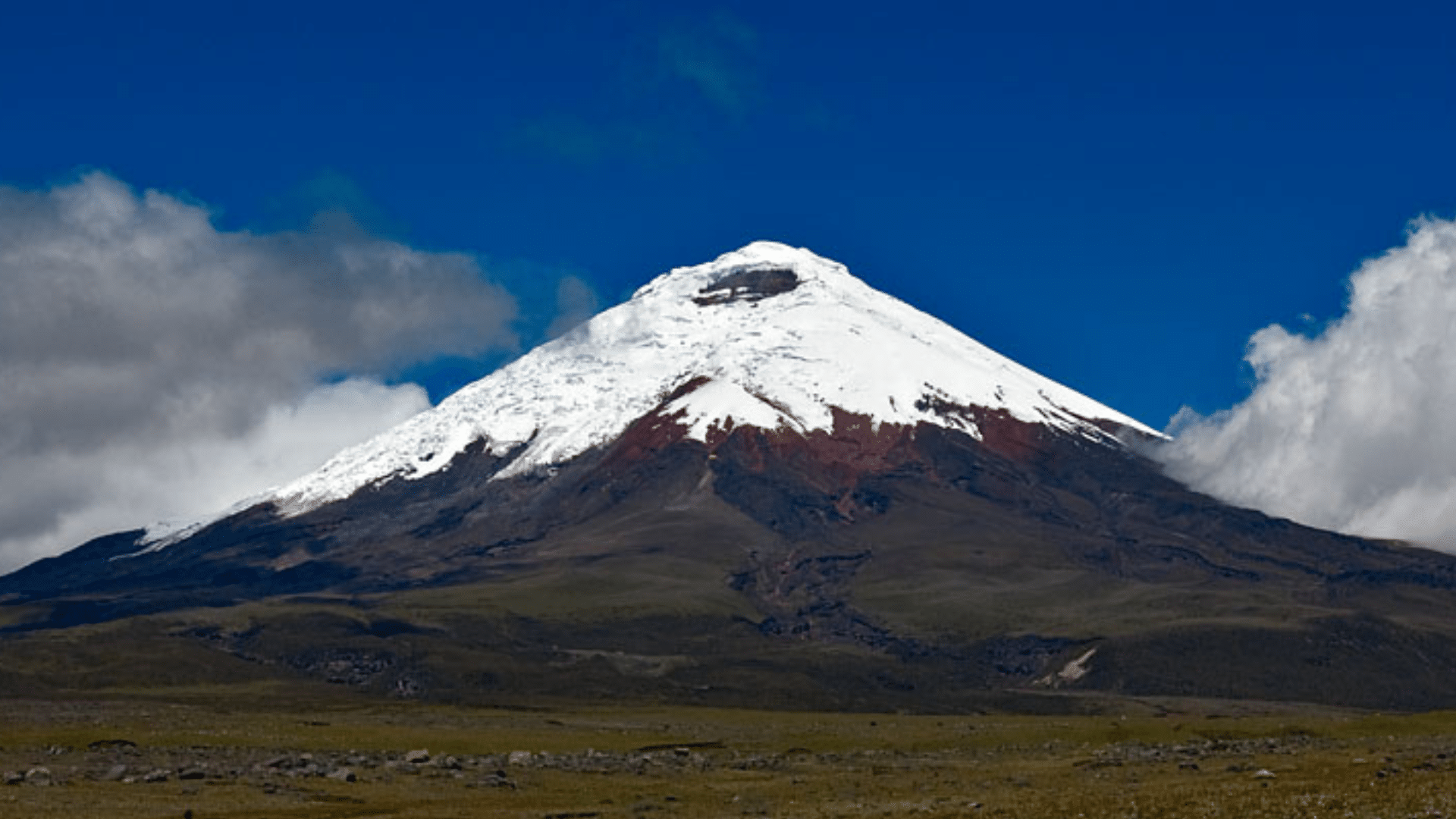
Ecuador’s second-tallest active volcano, located in Cotopaxi National Park near Quito, has erupted more than 50 times since 1738. It features a classic cone shape that is visible from the capital.
Why Visit: Climb the volcano or enjoy views of this mountain that locals see as a guardian of their city.
Interesting Fact: The volcano has created many valleys from cooled lava flows.
13. The Hot Springs of Banos
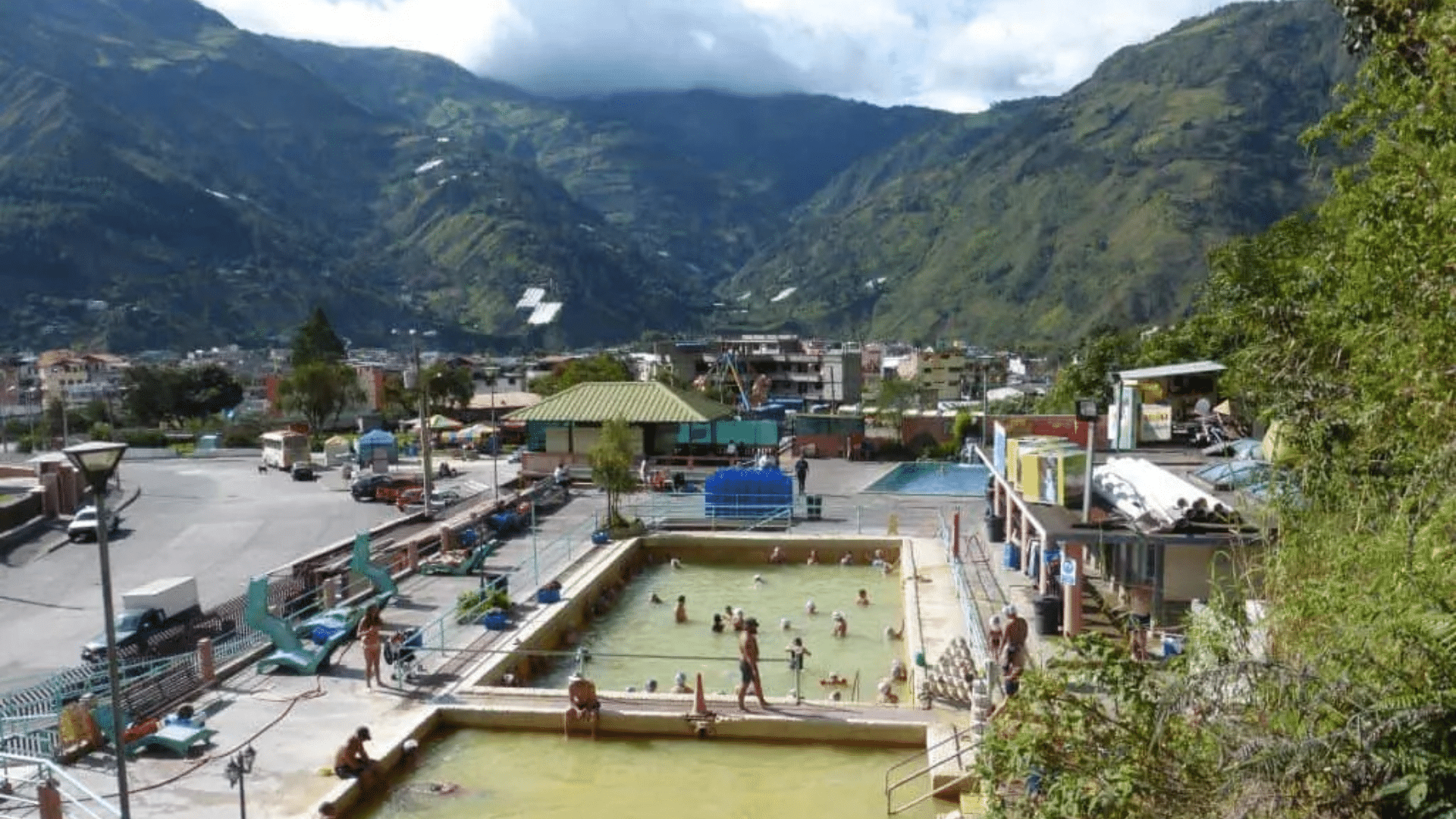
The town is surrounded by mountains and waterfalls, and its natural hot springs are heated by a nearby volcano. Over 10 waterfalls are in the area, and the Tungurahua Volcano heats the water.
Why Visit: Relax in healing hot waters after seeing beautiful waterfalls.
Interesting Fact: The nearby “Swing at the End of the World” at La Casa del Arbol lets you swing over steep drops with volcano views.
14. Laguna Quilotoa
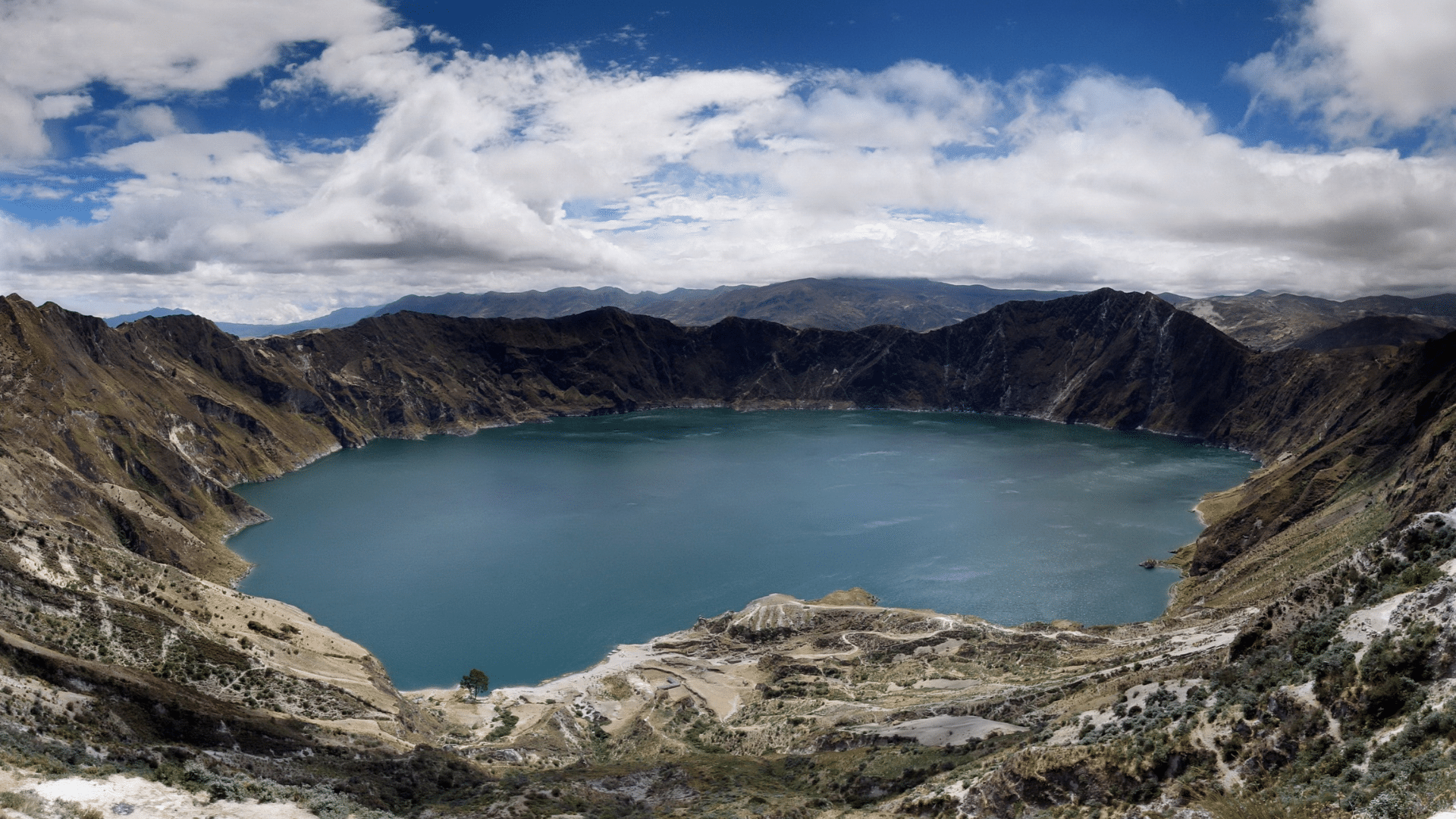
A beautiful turquoise lake inside a volcanic crater, the water sits 400 meters below the crater’s edge. The crater is believed to be 250 meters deep, and the lake’s turquoise color comes from minerals in the water.
Why Visit: Hike the 7.5 km rim for amazing views of the lake and surrounding Andes.
Interesting Fact: While scientists say the lake has a bottom, locals believe it is bottomless.
15. La Compania de Jesus
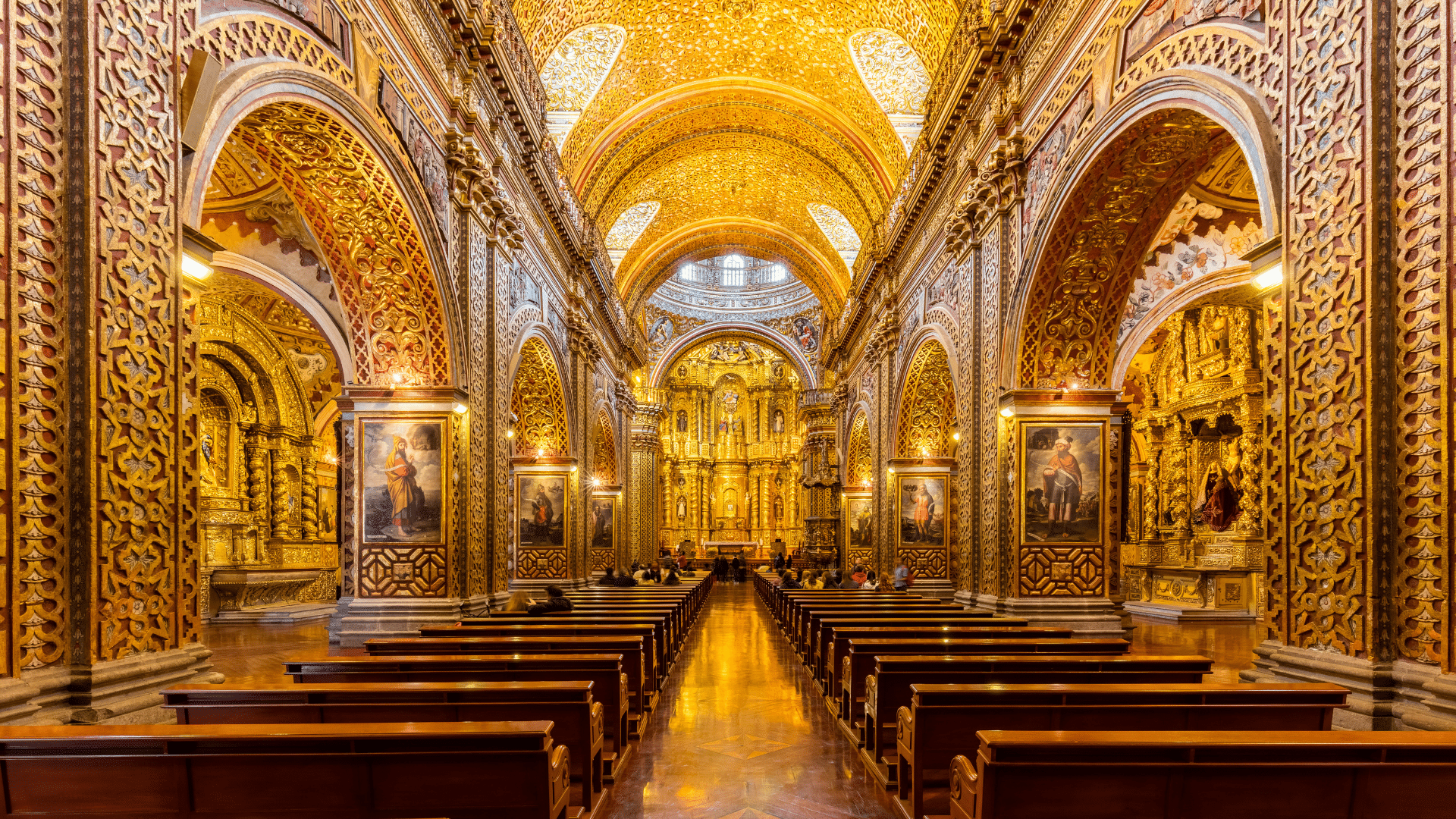
An ornate church in Quito, known for its gold interior, features walls painted bright red to symbolize Christ’s blood. Much of the interior is covered in gold leaf, and it took 160 years to complete.
Why Visit: See one of South America’s finest examples of Spanish Baroque architecture.
Interesting Fact: The carvings include native Ecuadorian plants alongside religious figures.
16. San Francisco Church
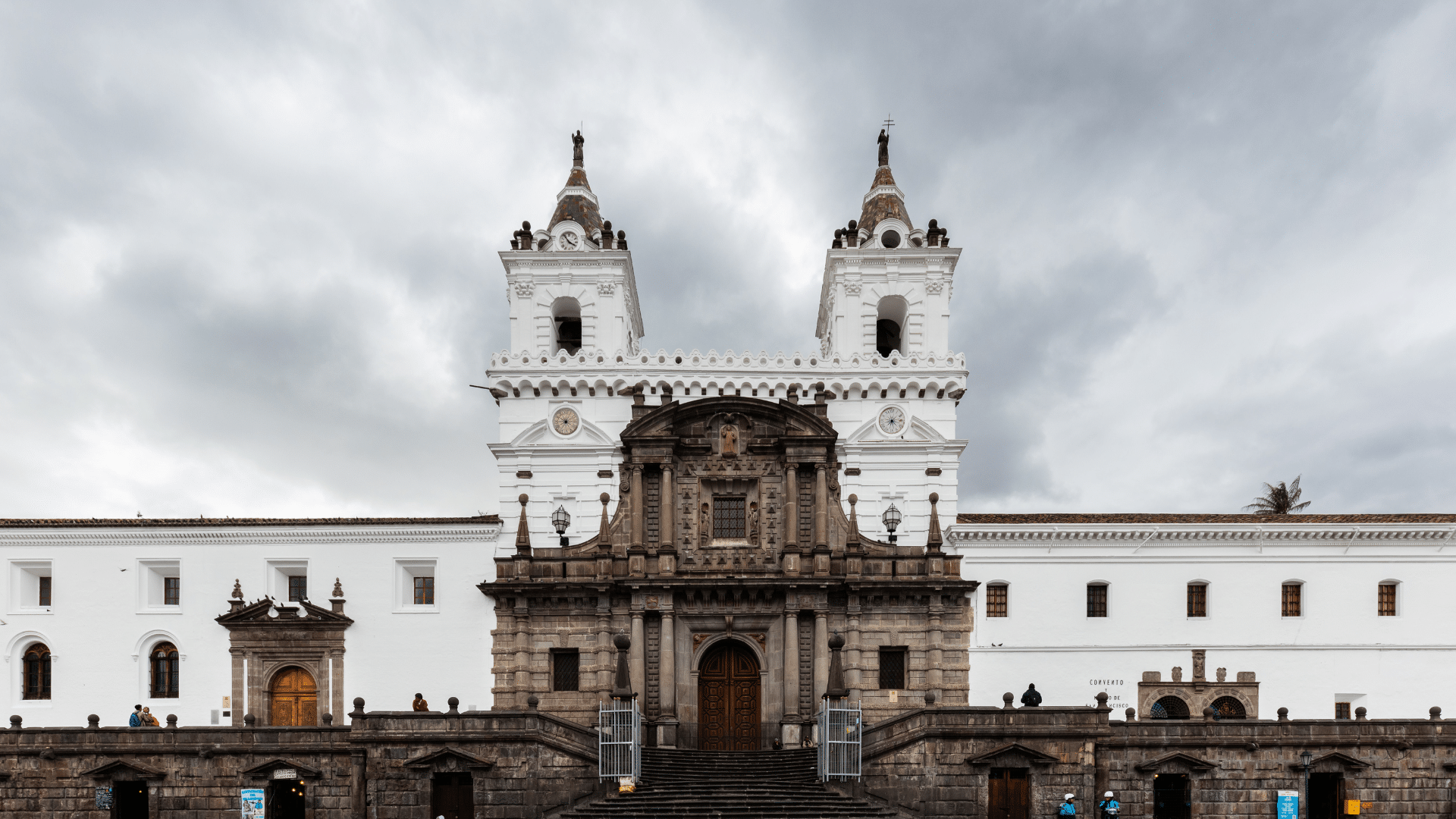
A church and monastery in Quito’s Old Town that blends cultures, it dates from the 16th century. The site features a temple, chapels, and a convent, and contains 3,500 pieces of art.
Why Visit: See the unique mix of Incan sun symbols and Catholic art.
Interesting Fact: The church has Moorish styling on its ceiling and Baroque details in its chapels.
17. Pambamarca Fortresses
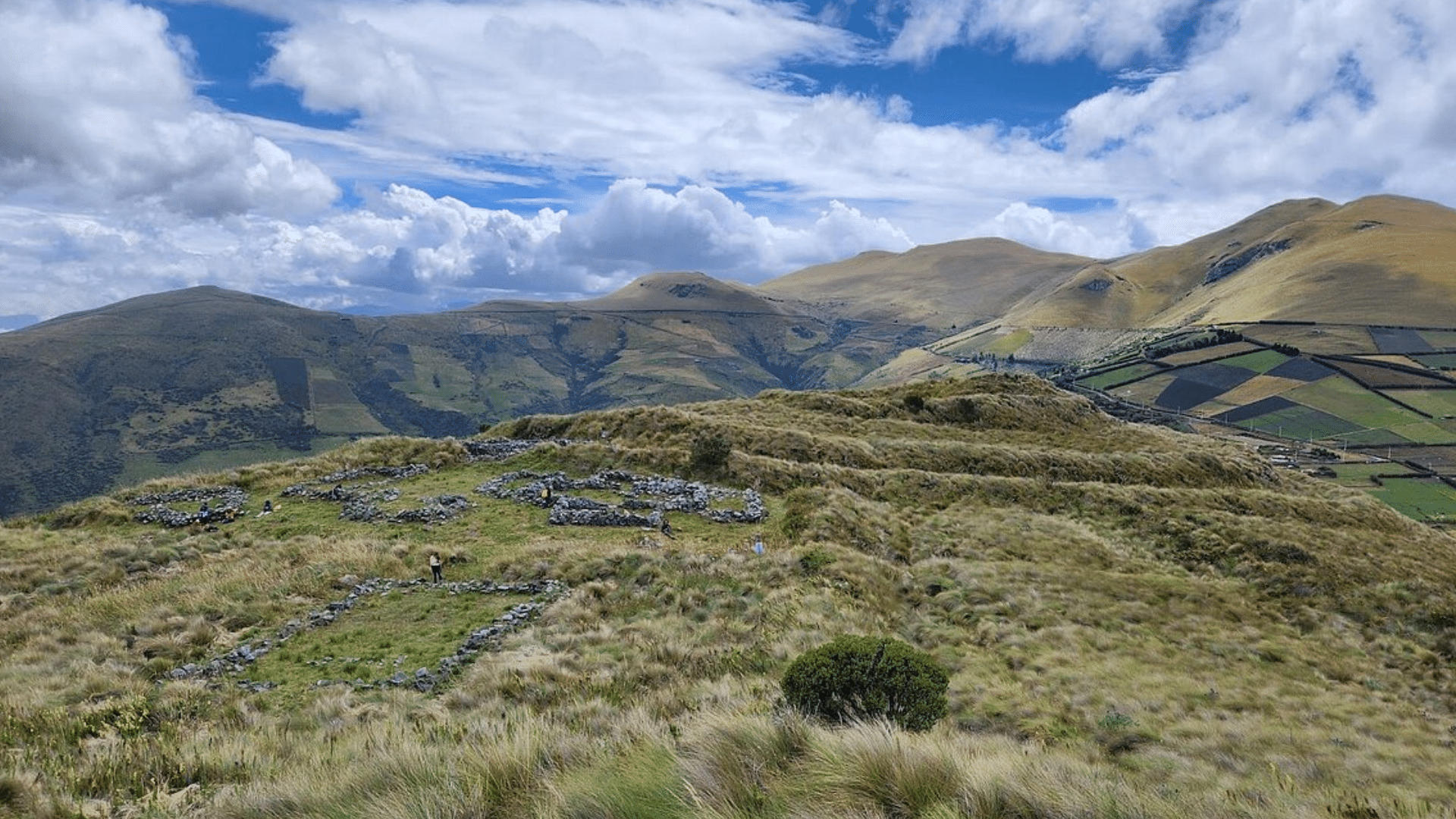
A group of hilltop forts from the Incan empire, built in the 15th century on an eroded volcano, marked the boundaries of the Incan empire. The largest complex has more than 70 stone structures.
Why Visit: Walk through well-preserved ancient military sites.
Interesting Fact: These were sites of bloody battles throughout the 15th and 16th centuries.
18. Yaku Parque Museo del Agua

A cave system with many local legends, it is located near Charupe. The caves were once thought to contain an immense library and are best visited with a local guide.
Why Visit: Explore caves while learning about local myths and stories.
Interesting Fact: The library legend was later linked to Cueva de Los Tayos.
19. La Tolita
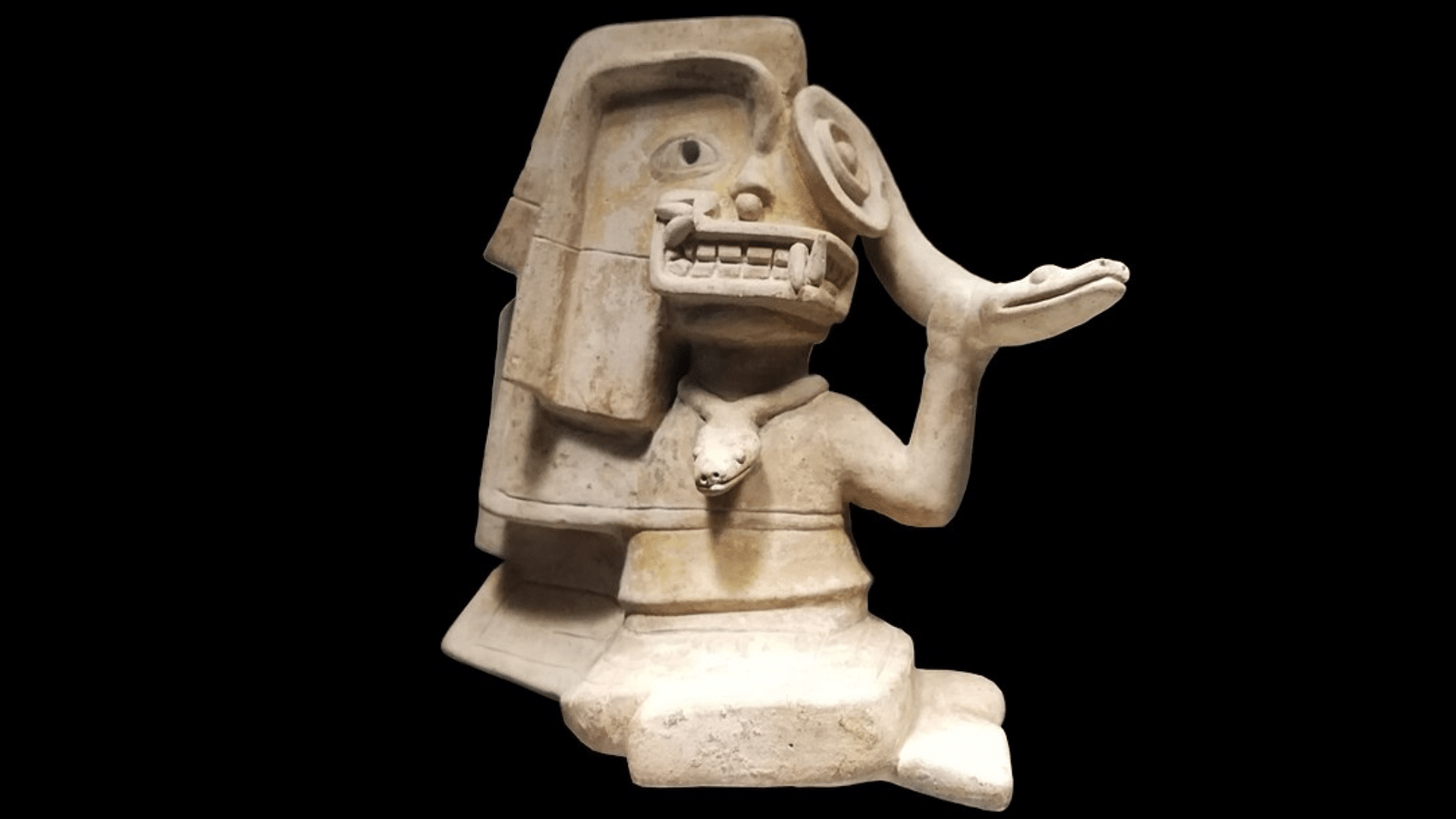
An island with important archaeological finds, it is home to an ancient ceremonial site. Artifacts found include pottery and gold offerings, with evidence showing that inhabitants worked with silver and platinum.
Why Visit: See an important historical site with artifacts displayed where they were found.
Interesting Fact: The island’s name comes from a small gold-washing pan used by ancient people.
20. Basilica del Voto Nacional
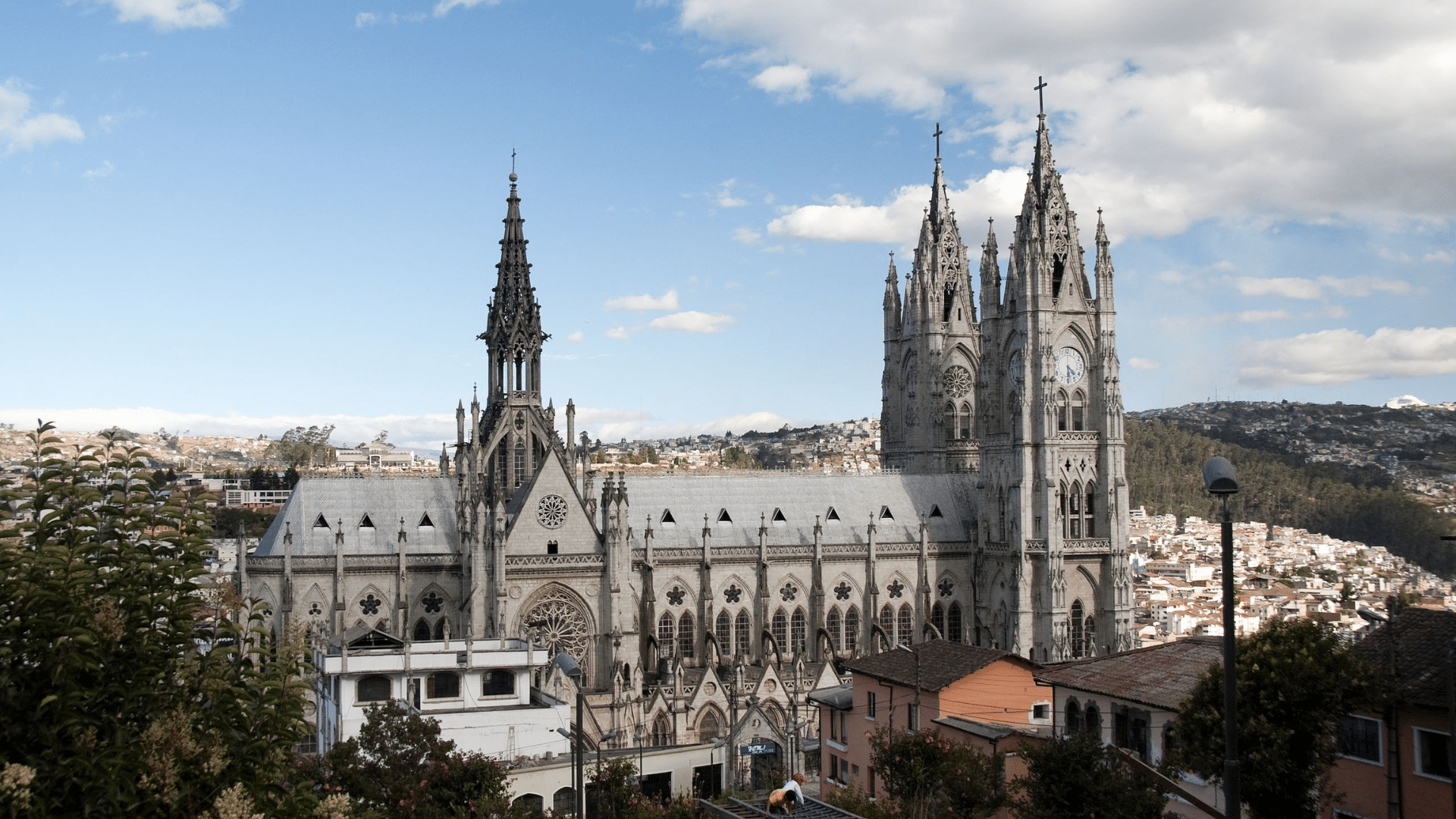
The largest neo-Gothic cathedral in South America, the building began in 1892. It is decorated with turtles and iguanas instead of traditional gargoyles, and its towers reach 377 feet high.
Why Visit: Climb the towers for amazing city views and see unique animal decorations.
Interesting Fact: Local legend says the world will end if construction is ever completed.
21. Santa Cruz Fish Market

An everyday fish market that becomes a wildlife spectacle, located on Santa Cruz Island in the Galápagos. It is a popular spot to watch wildlife interactions, as sea lions and pelicans regularly visit for scraps.
Why Visit: Watch the funny antics of wild animals competing for fish leftovers.
Interesting Fact: People often sit for hours just watching the animals beg and fight for food.
22. Muro de las Lagrimas (Wall of Tears)
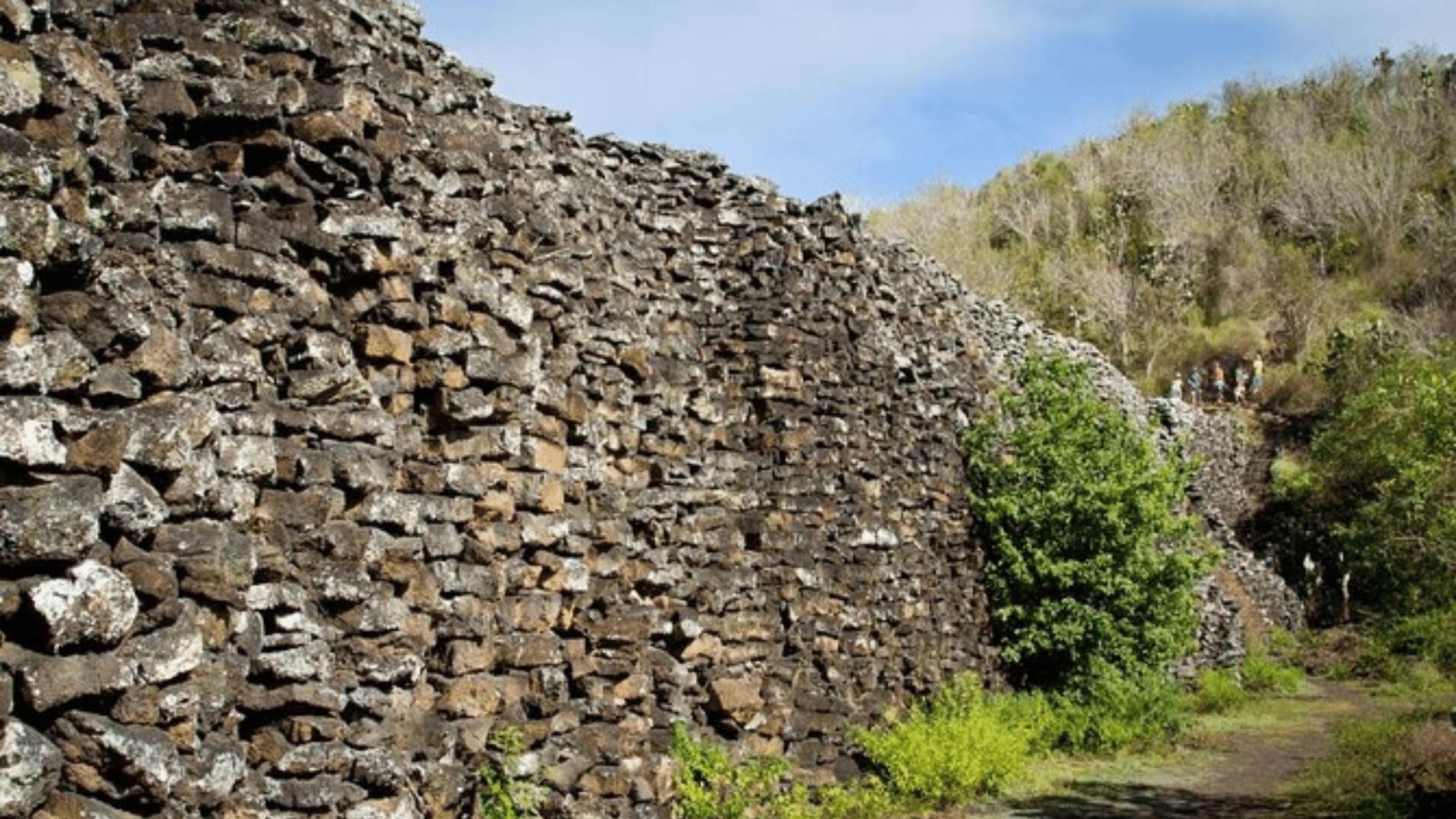
A massive wall was built by prisoners on Isabela Island between 1945 and 1959 as part of a penal colony. The wall stands 25 meters tall and is made of lava rock. Although it was never completed, it remains a historical monument.
Why Visit: See this monument to human suffering and persistence.
Interesting Fact: The wall is said to make crying sounds, likely from wind through the cracks in the stones.
23. Plaza de las Flores
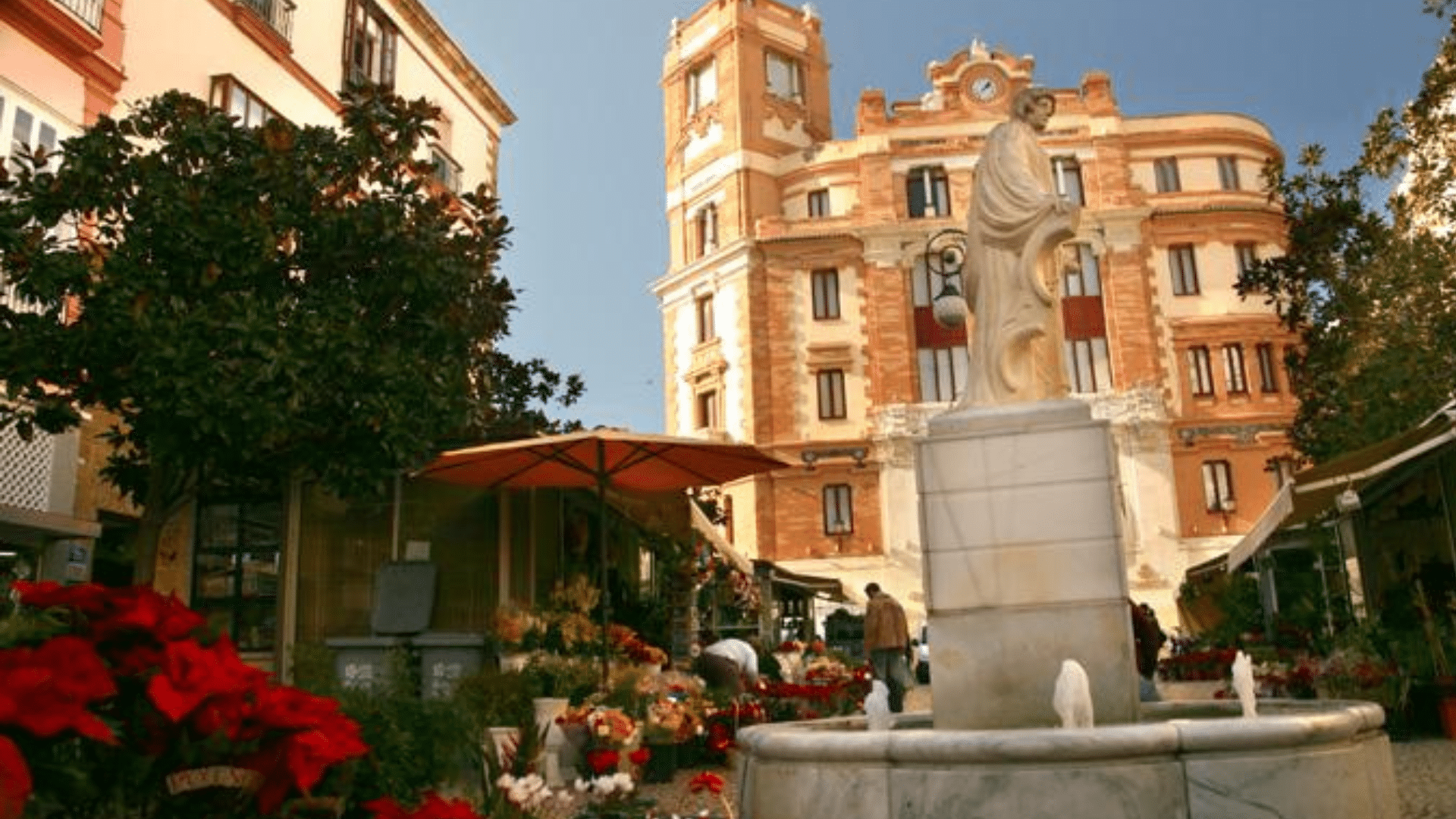
A beautiful flower market in Cuenca and one of the nicest spots in the city. The market features many vendors in traditional dress and is known for its friendly atmosphere and sweet smells.
Why Visit: Experience local culture, see traditional clothing, and enjoy beautiful flowers.
Interesting Fact: The low prices and friendly vendors make this a favorite spot for both locals and tourists.
The Natural Beauty of Ecuador
Ecuador offers a range of landscapes that’s hard to find in any other country of similar size. The Andes mountains cut through the middle, creating cool highlands with active volcanoes and crater lakes.
The Amazon region in the east gives you thick rainforests full of wildlife. On the west, you’ll find coastal plains leading to the Pacific Ocean. National parks protect many of these natural treasures.
Cotopaxi National Park shields one of the world’s highest active volcanoes, while Galapagos National Park keeps its unique animal species safe.
These protected areas let you see nature in its purest form while making sure it stays that way for future visitors.
Ecuador’s mix of plants and animals makes it a dream for nature lovers. The country has more bird species per square mile than any other in South America.
From tiny hummingbirds in the cloud forests to giant tortoises in the Galapagos, the range of wildlife you can see in a single trip makes Ecuador stand out among travel spots worldwide.
Conclusion
We hope this guide to Ecuador’s landmarks has shown you why this country is such a special place to visit.
From the unique wildlife of the Galapagos to ancient Inca ruins, colonial churches, and stunning volcanoes, Ecuador offers a fascinating mix of natural beauty and history in a small space.
These landmarks give you a taste of everything the country has to offer: natural wonders, rich history, and vibrant culture.
Ecuador stands out in South America for a good reason. It’s a place where you can swim with sea lions in the morning and stand on the exact middle of the world by afternoon.
Looking for more travel inspiration? Be sure to read our other blogs for similar content on amazing destinations!

